White Fire Threatens Santa Ynez Recreation Area
Charcoals Thrown on Dry Grass May Have Started the Fire
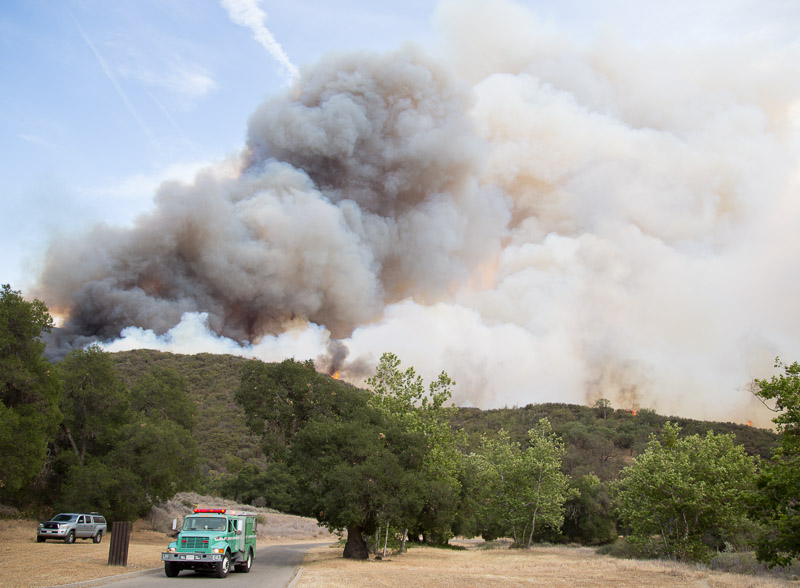
Early afternoon on a beautiful Memorial Day Monday turned ugly when flames from the White Rock Day Use Area along the Santa Ynez River were driven north across the river and began climbing up the slopes of Sage Hill within minutes. Winds were reported to be averaging 20-25 MPH with gusts 10-to-15 MPH above that.
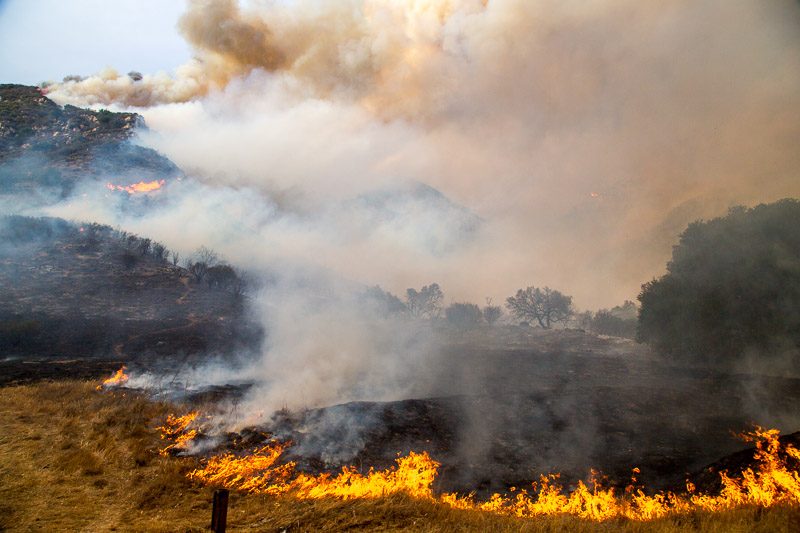
The fire has been rumored to have been started by an unidentified man who reportedly scattered charcoal remnants from what may haven been coals from an afternoon BBQ. According to the granddaughter of the campground host at White Rock, who called in to KEY-TV, a witness or witnesses spotted a person discarding coals onto dry grass, then departing quickly when the coals caught the grass on fire.
Despite a quick response from the nearby Los Prietos hot shots and other engine crews, along with air support, the wildfire began to move rapidly in an east, northeast direction, crossing the front flank of Sage Hill, jumping a drainage, then moving across Oso Canyon within an hour or so.
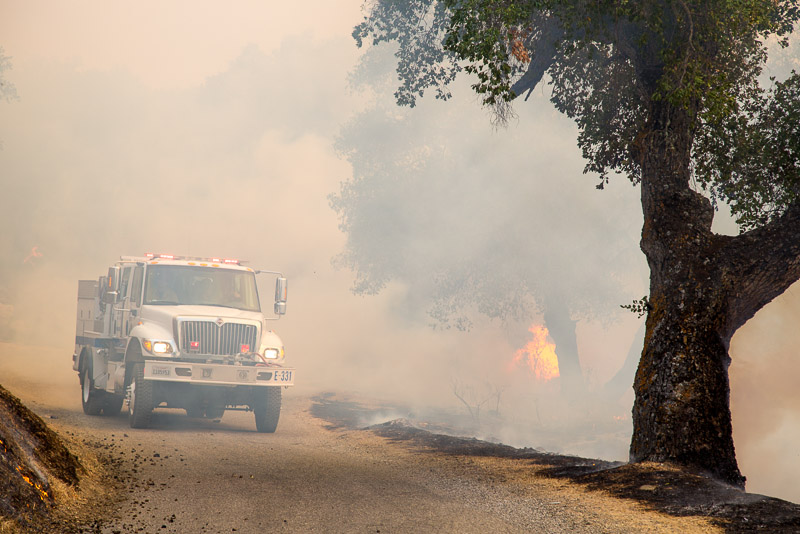
The immediate concern was for canyon residents and the hundreds of campers and day-use groups who had flocked to the Santa Ynez River. One couple that had ridden their mountain bikes from Upper Oso up and over a nearby trail called the Camuesa Connector barely escaped when they looped back along the river and attempted to ride back up to Upper Oso where their car was parked. Search and Rescue members were able to drive in and bring the car down to the distraught couple.
Search and Rescue members also helped others evacuate. As I was driving in, I could see a steady stream of cars exiting the canyon. There were also numerous others who were allowed to drive in past the road closure near Fremont Camp to rescue horses that were pastured in the canyon.
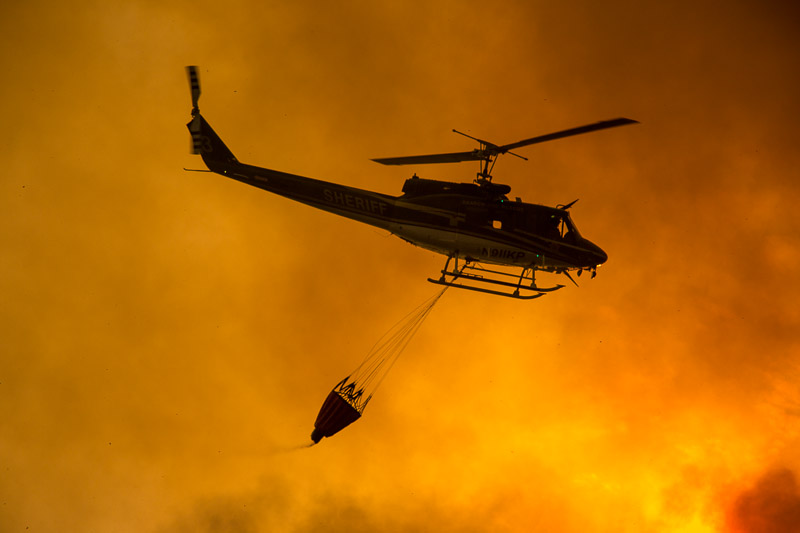
As I drove past the White Rock Day Use Area, I was amazed by the fire’s impact. From that point all the way to the first river crossing, almost all of the vegetation in the river bed and hillsides north of it had been burned to the ground. Several engine crews were in the process of mopping up along the road just before the Los Prietos Boys Camp, where they had barely kept the fire from crossing to the south side and creating infinitely more problems for the fire fighters.
As I crossed the river to the Lower Oso Picnic Area, I spotted small fires along the road, and when I turned and headed up toward Upper Oso, I could see billowing black clouds of smoke, swirling angrily as they headed hundreds of feet into the air. Continuing farther, I could see that parts of the Upper Oso area were completely engulfed in flames with several of the steeper hillsides filled with 40- to 50-foot-high walls of fire.
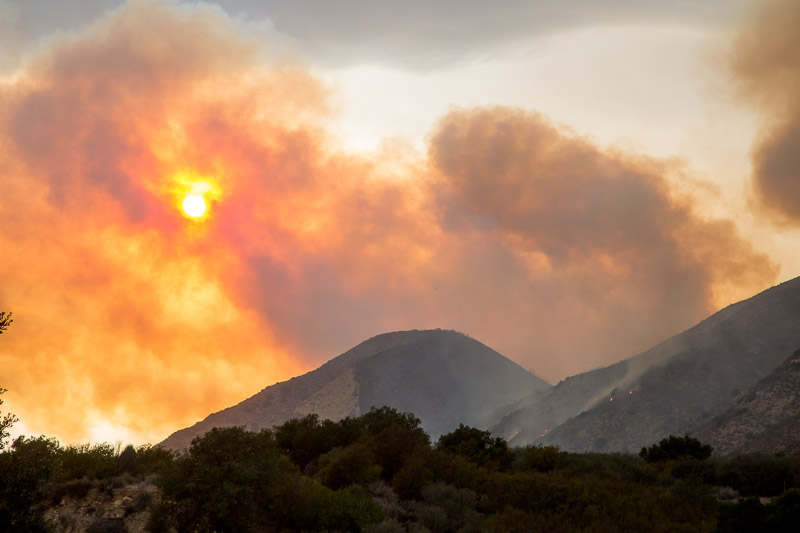
Throughout the canyon, one could see spot fires, walls of flame, burning oak trees, fields of grass on fire, and a sense that this could be a difficult fire to deal with because the topography is steep and extremely rugged. There are few roads into the mountainous country north of the river and should the fire continue to follow an eastern path, as the Zaca Fire did in 2007, it could be difficult to contain within the next few days. The good news, if there is good news, is that the canyon evacuation went well and as the fire moves eastward it minimizes the danger that it may jump the river and threaten either the canyon homes or the Painted Cave area.
For those who know the Santa Ynez River canyon, the fire has stayed high, on the north side of the river and has moved east of Oso Canyon to a point about where Falls Picnic area is located at the second river crossing. There are numerous engine and hot-shot crews stationed along the river road to ensure the fire does not spread across it and to knock down small hot spots that burn here and there above them.
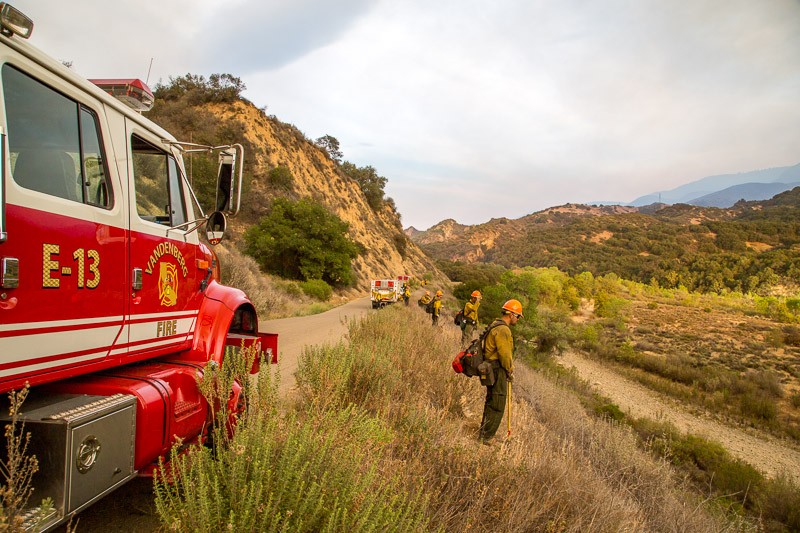
Tomorrow could bring relief or new challenges, mostly depending on what the weather decides to do. The general trend over the next few days appears to be a warming trend, but it is the wind that could determine whether the White Fire has a short shelf life and becomes something more powerful and dangerous. The goal is to keep the fire north of the river until weather conditions are more favorable to containing it.
“It’s only May,” one fire fighter exclaimed to me, “and we are two months ahead of typical fire conditions.” In the meantime, canyon and Painted Cave residents can breathe a sigh of relief as it appears they are out of danger.



